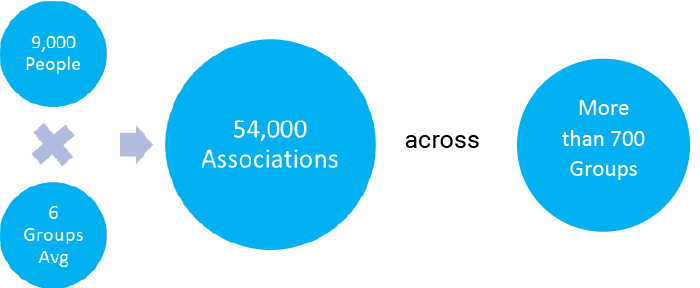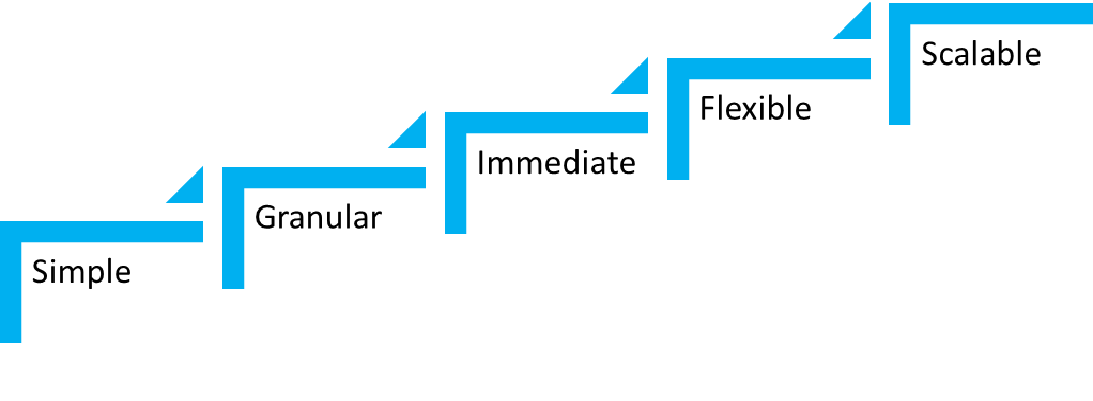What if you could ensure that the right people are in the right groups as your organization evolves??
What would that ensure? What would that prevent?
Identity is defined by Role and its Entitlements.
Role is defined through Groups.
Meet Maria DiStephano

She works at Acme Corp.
That’s great but it doesn’t tell us much about who she is.
She is head of R&D in Turbine Manufacturing, sits on the steering committee for Business Development, and works out of the Rome office.
Ok, now we really know who she is and what she needs to do her job.
As people, our role in an organization is what defines us and what we should be entitled or equipped to do. Normally the individual isn’t granted access; the role is. And by placing an individual in that role, they then receive the entitlement.

Active Directory groups are the manifestation of Role just as users are the manifestation of the person. AD groups are used for many things such as access data and applications, or the group membership is used for things like email distribution.
Each user in a group is an association. The trick is to make sure the right associations are in place by keeping people in the right groups.
That’s Group Governance! It’s vital to things like Data Access Governance and Zero Trust using the principal of least privilege.
“We have more groups than we have people.”
We hear this from customers repeatedly. The problem is not just the number of groups, it’s the relationships. Consider Acme Corp…

Maintaining that is tedious. People make mistakes. But there’s a lot at stake.
One of our largest Group Governance customers has more than 100,000 employees. How many associations do you think that is to maintain correctly? More than 1 million? No wonder they’ve been a customer for years.
Let’s put some automation into keeping your people in the right groups.
So that the right people have access to the information and assets they really need.
We will get there with a solution that is

Click on the tabs at the top to learn more details about how we help, specific challenges that might align with your goals, and some case studies of how Group Governance has helped a few of our other customers.
Active Directory Group Management
For most organizations, Active Directory group membership is the means of providing or denying message distribution and access to network resources. With the potential for unauthorized permissions or access however, it’s imperative that Active Directory user groups be up to date at all times.
By monitoring Microsoft Active Directory, GroupSymmetry automates group membership updates in real-time, adding or removing users according to pre-established identity-based policies and event-driven changes in network user Active Directory attributes. This eliminates the need to manually modify group memberships and ensures that your organizational groups are always accurate and up-to-date.
With real-time updates, you can trust that your network group memberships are accurate and that authorized members have access to the data they need to do their jobs.
Group Membership and Security Risks
Group objects in Microsoft AD simplify network management by allowing administrators to assign access rights to a single group, applying the permissions to all members of that group, rather than assigning them individually. Group members can access shared resources and applications on the network, improving collaboration and keeping information secure and visible only to authorized users. But unless maintained and kept current, these groups can quickly become outdated and inaccurate – causing a series of security and compliance risks.
Access and Risks
Your organization relies on up-to-date Active Directory groups to operate both efficiently and securely. When authorized users do not have access to the files needed to do their work, productivity is hampered. When unauthorized users have access to high-value files, the organization is at risk for data breaches, noncompliance, and depending on the content of the files, significant monetary fines.
Typical Approaches to Group Member Management
Unfortunately, unless you have an Identity Management system managing group memberships, you’re generally limited to one of two other methods –both of which have their associated problems. The first is on a manual basis which takes valuable time from your IT staff and has risks based on IT response time. The other is via complicated scripts that must be run manually and continuously maintained.
Automated Group Management
The Group Governance solution from Condrey Corporation is group automation for your Active Directory group memberships. Group-specific policies that you establish can automatically add or delete users to or from groups according to your policy specifications. With scheduled group synchronization and real-time updates, accurate group membership and secure group access to data are ensured.
Policy-Based Membership Criteria
Policies specify the criteria for group membership inclusion or exclusion. Once you have established a policy and associated it to an Active Directory group object, the policy automates the membership of that group whenever a new user is created in Active Directory, user attributes are modified, or a user is moved to another container in Active Directory.
Group Membership Updates in Real-Time
The Group Governance solution from Condrey Corporation includes an Engine and an Event Monitor. The Event Monitor monitors Active Directory for events that can affect group membership and makes automated group membership updates. When there are no events to trigger group membership updates automatically, you can synchronize group memberships either manually or as a regularly-scheduled event.
Sensitive files are not just those files containing personal identifiable information (PII), they’re also the files that contain sales forecasts, financial numbers, and other strategic content to provide a competitive advantage for the organization. This information is frequently stored in spreadsheets, presentation files, and word processing files that are collectively…
Read MoreGoverning Groups is Fundamental Active Directory user groups simplify network management by enabling administrators to assign access rights to a single group, which then applies the permissions to all members of that group, rather than having to assign them individually. But unless the groups are meticulously maintained and kept current,…
Read MoreWhen the outbreak of COVID-19 was declared a national emergency in March of 2020, schools immediately began to shut down to stop the spread of the virus. This left most U.S. school districts scrambling to come up with work from home solutions for their students and faculty. As a public…
Read MoreA large U.S. headquartered advertising conglomerate with multiple agencies has more than one hundred thousand employees and hundreds of partners in the management of its clients throughout the world. To manage the complexity of its global IT requirements, the conglomerate depends on an outsourced IT department for overseeing its hundreds…
Read MoreThe Challenge Like most regulated industries, banks are required to protect the privacy of consumers’ finances under a federal law called the Financial Modernization Act of 1999 (also known as the Gramm-Leach-Bliley Act). The law governs how financial institutions can collect and disclose customers’ personal financial information, maintain safeguards to…
Read More
Senergy
Automate the Management & Protection of Your Network File System Data
Automate data management to mitigate risk. Identity-Driven and Target-Driven policies in Senergy ensure that you’re always managing data assets properly. Senergy handles data privacy, rights and access analysis, data disposition, and protection of high-value targets through its policies.
Groupsymmetry
Automate AD Group Membership Updates in Real-Time
For most organizations, Active Directory group membership is the means of providing or denying message distribution and access to network resources. With the potential for unauthorized permissions or access however, it’s imperative that AD group membership be up to date at all times.


